#zhang ho layouts
Explore tagged Tumblr posts
Text
Boao Forum for Asia (BFA) convened the 2nd Innovation and Intellectual Property Protection Conference (IIPPC) in Guangzhou on July 20. Distinguished guests from China and abroad attended the conference, including Edmund Ho Hau-wah, Vice Chairman of the 14th National Committee of the Chinese People’s Political Consultative Conference (CPPCC), Li Baodong, Secretary General of Boao Forum for Asia (BFA), Leong Vai Tac, Member of the Council of Advisors of BFA and Chairman, BFA Macao Committee for Guangdong-Hong Kong-Macao Greater Bay Area Development, Kenichiro Natsume, Assistant Director General of the World Intellectual Property Organization (WIPO), Liu Hua, Director of WIPO Office in China, Shoichi Okuyama, President of the International Association for the Protection of Intellectual Property (AIPPI), Wang Zhicheng, Director General of Copyright Department of National Copyright Administration of China (NCAC), Lin Guanghai, President of the Civil Adjudication Tribunal №3 (IPR Division) of the Supreme People’s Court of China, Zhang Zhicheng, Director of Intellectual Property Protection Department of China National Intellectual Property Administration (CNIPA), David FL Wong, Director of the Intellectual Property Department of the Hong Kong SAR Government, Zhang Xichun, Secretary of the CPC Committee of South China University of Technology (SCUT), OTA Yoshitaka, Director of the Intellectual Property Rights Department of the Japan External Trade Organization (JETRO) Beijing, Zheng Chaogen, President of Fanchakonggu, etc.
With the BFA as the host, the IIPPC is strongly supported by the WIPO China Office, the China Intellectual Property Society (CIPS), the SCUT and the Guangdong Knowledge Economy Development Promotion Association. Themed on “Stimulating Innovative Vitality and Promoting High-Quality Development”, the conference held a plenary, four sessions and other thematic activities, which attracted participants including leaders of domestic and foreign intellectual property authorities, research institutes, industry organizations, representatives of famous enterprises and officials from foreign consulates in Guangzhou, to attend the conference. Guests held in-depth discussions and reached broad consensus centering on topics including “Intellectual Property Supports High-Quality Development of Manufacturing Industry”, “Intellectual Property Layout and Trend of Future Industries”, “Intellectual Property Strategy Consideration in Capital Market” and “Branding Strategy and High-Quality Development of Enterprises and Regional Economy”.
Representatives were of the view that under the trend of innovation triggered by the new sci-tech and industrial revolutions, intellectual property is becoming increasingly prominent in the global value chain, and its role as a strategic resource for national development and a core element of international competitiveness has become more significant. With a multi-polarized innovation landscape around the globe and a smaller gap of regional innovation, the international intellectual property career and industry are furthering in a healthier trend, coincide with a fairer and more rational global governance system of intellectual property and a more balanced and effective innovation ecosystem of intellectual property.
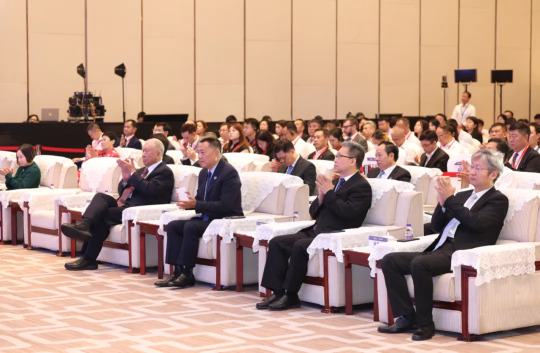
Representatives noted that China and other Asian countries could continue to play a leading role in advancing the world’s innovative development and intellectual property protection. In recent years, with its rapid growth in sci-tech innovation, Asia has outperformed as a highland on researching innovation and intellectual property output in the world, and strongly boosted the world economy recovery in post-pandemic era. China actively participates in synergistic international intellectual property governance, exchange and cooperation, and offers its solutions to forming a more open, inclusive, balanced and beneficial order for the development of international intellectual property.
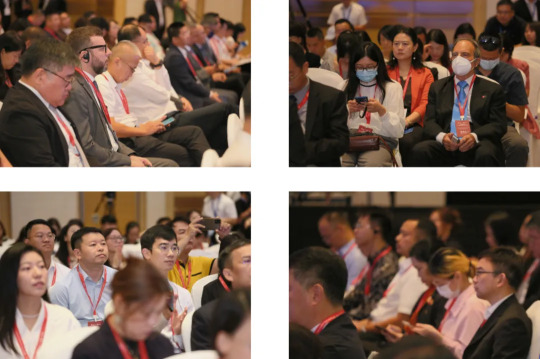
Representatives called on all stakeholders in intellectual property community to deepen exchanges and cooperation and jointly explore the immense potential of global innovation and sustainable development. They advocated more engagement in global intellectual property governance under the framework of WIPO to help stipulating and polishing the relevant rules and standards of international application, protection, utilization and trade of intellectual property, and bigger contribution to safeguarding the multilateral cooperation order of global intellectual property.
0 notes
Text
Ole Scheeren unveils huge art museum slotted in beside Beijing's hutongs
Architect Ole Scheeren has released the first official photographs of his Guardian Art Center, which he describes as a "big culture machine" on the edge of Beijing's Forbidden City.
Billed as the world's first custom-built auction house, the huge structure accommodates a wide range of facilities, from art galleries and art-conservation facilities, to a hotel, event spaces and public transport infrastructure.
At its base, the building comprises a cluster of small blocks that are designed to match the scale of the surrounding hutongs – the densely packed neighbourhoods filled with traditional courtyard houses, largely unique to Beijing.
But above these, Scheeren designed a large "floating ring" that frames the entire outline of the structure.
"I was interested in how we could fuse this everlasting tension between history and modernity," the architect told Dezeen.
"My idea was to conceive the base of the building as an extension of the scale of the historic city, as a series of sediments that relate in scale and materiality to the historic context. And then to take the scale of the modern city and float a volume atop this articulated cultural base."
The smaller blocks at the base are clad with grey basalt stone and dotted with perforations. Together, these tiny circular openings form an abstraction of a historic Chinese landscape painting by artist Huang Gongwang.
By contrast, the ring that forms the upper section of the building is covered in a grid of translucent glass panels, described by Scheeren as being "like floating bricks".
There are only a handful of transparent openings, which take the form of window walls, making it clear where visitors get in and out of the building.
"It’s not a building of glass," explained Scheeren. "This slight sense of introverted-ness is very Beijing. It is a city that unfolds all of its grandness from the inside – in many ways it works with the place."
Scheeren, who is based in Beijing, first unveiled his design for the Guardian Art Center in early 2015. Photos began to emerge in the summer of 2017, shortly before the art galleries opened, although the hotel is still yet to receive its first guests.
The architect sees the building as a model for how Chinese architecture can be both contemporary and respectful to history – a combination that might please Chinese president Xi Jinping, who called for an end to "weird architecture" back in 2014.
Photo is by Shuhe
"This is an important statement vis-a-vis architecture in general in China at this point, to not only present the glaring and new, but to find ways to address a sense of historic continuity without falling into historicising," said Scheeren.
"You could see it as a response to that [speech]," he added. "I had actually designed the building long before the issue came up, but there was a notion of it being an important issue, even before it became a political issue."
Photo is by Alex Fradkin
Inside, the building's layout is as much of a jigsaw as its exterior. At its centre is a 1,700-square-metre gallery space that is designed to be as flexible as possible. Integrating a system of moveable partitions and adaptable ceiling systems, it can be used for exhibitions, auctions and other events.
A series of smaller exhibition and auction rooms are scattered around the outside, along with two large auction halls that are more traditional in appearance. Areas for art conservation are located in the basement, with parking below and a metro station to one side.
Photo is by Shuhe
The hotel is located in the floating ring, while a small tower accommodates educational facilities. There are also restaurants, offices and a bookshop slotted into the upper levels.
"The building is very intricate accumulation of pieces. What I tried to achieve was a sense of understated monumentality," added Scheeren.
Photo is by the architects
Scheeren, who ranked at number 255 on Dezeen Hot List 2017, founded his studio in 2010.
Initially he was predominantly working in Asia, on projects including the The Interlace in Singapore. But he has just announced a series of projects in a variety of global cities, including a skyscraper in Vancouver, a high-rise refurbishment in Frankfurt and a landscape-covered tower in Ho Chi Minh City, Vietnam.
Related story
Ole Scheeren: Asia has "a certain fearlessness and vision for the future"
Photography is by Iwan Baan, apart from where otherwise indicated.
Project credits:
Design architect: Buro Ole Scheeren Principal/design: Ole Scheeren Partners: Eric Chang, Dan Cheong Associate in charge: Virginia Chiappa Nuñez Team: Marcel Holmberg, Sun Ke, Emily Liang, Cecilia Lei, Yingda Liu, Anna Pierotello, Nina Sattler, Olaf Turck, Lin Wang; with: Benjamin Ahrens, Mark Biemans, Kim Bjarke, Catarina Canas, Alicia Casals, Michael Cavander, Jeffrey Cheng, Patrick Conway, Dyno Du, Nicolaz Frez, Brian Fung, Daniel Hawkins, Xinran Ji, Philipp Kramer, Emeline Laurencon, Yuyang Lin, Mavis Liu, Wymen Lo, Max Ma, Rafael Merino, John Murphey, Marcin Olszowski, Kevin Ou, Kevin Park, Yanyadech Phornphong, Aaron Powers, Klementina Savickaite, Jim Shi ,Chiara Storino, Joseph Tang, Yang Tao, Elena Yang, Quentin Yiu, Francis Young, Lei Yu, Danny Zhang, Bruno Zhao, Weiwei Zhang, Yi Zhu Concept team: Catarina Canas, Brian Fung, Paloma Hernaiz, Marcel Holmberg, Tait Kaplan, Jaime Oliver, Joseph Tang
Local design institute: Beijing Institute of Architectural Design Structural engineer: Thornton Tomasetti Building services engineer: WSP Facade consultants: Front Inc, PFT Construction Consulting Interior design: Buro Ole Scheeren, MQ-Studio Lighting consultant: ZDP
The post Ole Scheeren unveils huge art museum slotted in beside Beijing's hutongs appeared first on Dezeen.
from ifttt-furniture https://www.dezeen.com/2018/01/24/ole-scheeren-guardian-art-center-museum-beijing-forbidden-city-hutongs/
0 notes
Text
Boao Forum for Asia (BFA) convened the 2nd Innovation and Intellectual Property Protection Conference (IIPPC) in Guangzhou on July 20. Distinguished guests from China and abroad attended the conference, including Edmund Ho Hau-wah, Vice Chairman of the 14th National Committee of the Chinese People’s Political Consultative Conference (CPPCC), Li Baodong, Secretary General of Boao Forum for Asia (BFA), Leong Vai Tac, Member of the Council of Advisors of BFA and Chairman, BFA Macao Committee for Guangdong-Hong Kong-Macao Greater Bay Area Development, Kenichiro Natsume, Assistant Director General of the World Intellectual Property Organization (WIPO), Liu Hua, Director of WIPO Office in China, Shoichi Okuyama, President of the International Association for the Protection of Intellectual Property (AIPPI), Wang Zhicheng, Director General of Copyright Department of National Copyright Administration of China (NCAC), Lin Guanghai, President of the Civil Adjudication Tribunal No.3 (IPR Division) of the Supreme People’s Court of China, Zhang Zhicheng, Director of Intellectual Property Protection Department of China National Intellectual Property Administration (CNIPA), David FL Wong, Director of the Intellectual Property Department of the Hong Kong SAR Government, Zhang Xichun, Secretary of the CPC Committee of South China University of Technology (SCUT), OTA Yoshitaka, Director of the Intellectual Property Rights Department of the Japan External Trade Organization (JETRO) Beijing, Zheng Chaogen, President of Fanchakonggu, etc.
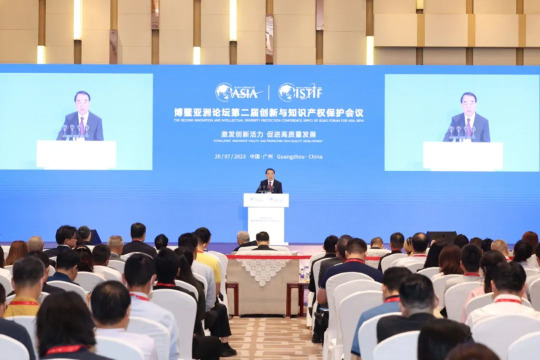
With the BFA as the host, the IIPPC is strongly supported by the WIPO China Office, the China Intellectual Property Society (CIPS), the SCUT and the Guangdong Knowledge Economy Development Promotion Association. Themed on “Stimulating Innovative Vitality and Promoting High-Quality Development”, the conference held a plenary, four sessions and other thematic activities, which attracted participants including leaders of domestic and foreign intellectual property authorities, research institutes, industry organizations, representatives of famous enterprises and officials from foreign consulates in Guangzhou, to attend the conference. Guests held in-depth discussions and reached broad consensus centering on topics including “Intellectual Property Supports High-Quality Development of Manufacturing Industry”, “Intellectual Property Layout and Trend of Future Industries”, “Intellectual Property Strategy Consideration in Capital Market” and “Branding Strategy and High-Quality Development of Enterprises and Regional Economy”.
Representatives were of the view that under the trend of innovation triggered by the new sci-tech and industrial revolutions, intellectual property is becoming increasingly prominent in the global value chain, and its role as a strategic resource for national development and a core element of international competitiveness has become more significant. With a multi-polarized innovation landscape around the globe and a smaller gap of regional innovation, the international intellectual property career and industry are furthering in a healthier trend, coincide with a fairer and more rational global governance system of intellectual property and a more balanced and effective innovation ecosystem of intellectual property.
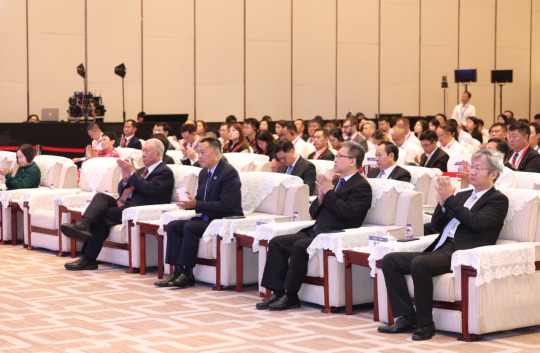
Representatives noted that China and other Asian countries could continue to play a leading role in advancing the world’s innovative development and intellectual property protection. In recent years, with its rapid growth in sci-tech innovation, Asia has outperformed as a highland on researching innovation and intellectual property output in the world, and strongly boosted the world economy recovery in post-pandemic era. China actively participates in synergistic international intellectual property governance, exchange and cooperation, and offers its solutions to forming a more open, inclusive, balanced and beneficial order for the development of international intellectual property.
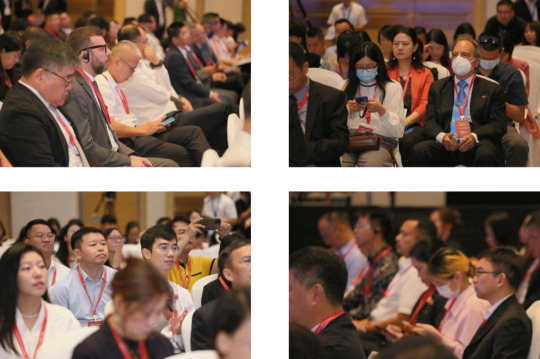
Representatives called on all stakeholders in intellectual property community to deepen exchanges and cooperation and jointly explore the immense potential of global innovation and sustainable development. They advocated more engagement in global intellectual property governance under the framework of WIPO to help stipulating and polishing the relevant rules and standards of international application, protection, utilization and trade of intellectual property, and bigger contribution to safeguarding the multilateral cooperation order of global intellectual property.
0 notes